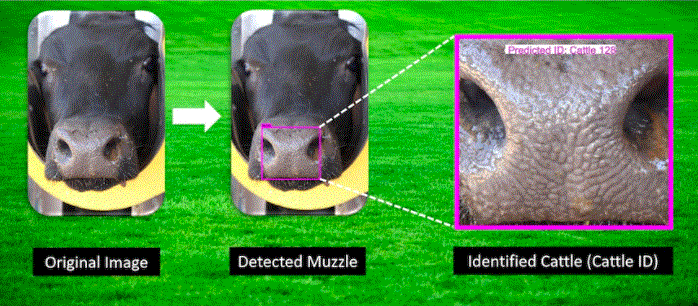Many of us are used to using our fingerprint to unlock our phones, and soon something similar could take place in the cattle yards.
You might not know this, but researchers say a cow's muzzle is just like its very own fingerprint and as a result they, too, will be able to enter the world of facial recognition.
University of New England researcher Ali Shojaeipour is developing artificial intelligence capable of identifying cattle by their muzzles for his PhD research.
It may only be early stages, but he said so far the results were promising.
"The muzzle of each cow contains a pattern that is unique to each individual," he said.
"The model was tested on 300 individual cattle and was able to identify them with an accuracy of 99.11 per cent.
"This technology is not limited to a specific breed of cattle, it can be used for various breeds."
Ali Shojaeipour plans to test his technology in a feedlot as soon as possible.(Supplied: UNE)
How does it work?
Just like when we unlock our phones, Dr. Shojaeipour's technology simply detects and identifies each animal via its muzzle.
He is also building a smartphone application so cattle can be identified via phone cameras.
"It's something like going to the airport and capturing your photo," Dr. Shojaeipour said.
The accuracy results of 99.11 per cent were obtained using images of cattle collected from the University of New England's Tullimba feedlot.
A screenshot of technology being developed used to identify cattle
The next step for the research is a field trial.
Getting the technology to work with live cattle moving in yards with dirt and dust is the next step for Dr. Shojaeipour.
"It still needs more development on a larger scale but I believe we are moving in the right direction," he said.
"We've been able to show that livestock biometric monitoring could potentially be used in future agriculture decision support systems for resource management at multiple scales of production."
The way of the future?
If the technology shows success with moving cattle, Dr. Shojaeipour said it may not be too much longer before current identification process are replaced, at least to some extent
"Cattle are currently identified through some traditional methods such as ear tagging, tattooing and so on, and all of these methods are not totally reliable," he said.
"It's a touch-less method. It doesn't put any stress on the animals and it's good for both the animals and humans.
"There's lots of potential."














